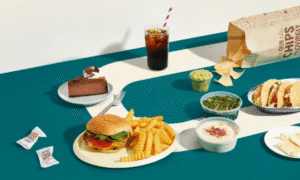Introduction to DoorDash and its history
Picture this: it’s a Friday night, and you’re craving your favorite dish from that trendy restaurant across town. The thought of getting dressed, braving traffic, and waiting in line feels daunting. Enter DoorDash—a game-changer in the food delivery landscape. Founded in 2013 by three Stanford students, DoorDash quickly transformed from a college experiment into one of the biggest names in on-demand food delivery. With just a few taps on your smartphone, culinary delights are brought straight to your doorstep.
As more people embrace convenience over cooking at home or eating out, DoorDash has emerged as a staple for hungry customers everywhere. But what exactly makes it so appealing? Let’s dive into how this innovative platform has revolutionized our dining experience and explore its impact on consumers, restaurants, and those delivering our meals with smiles—known as Dashers.
The convenience of on-demand food delivery
On-demand food delivery has transformed the way we dine. With just a few taps on your smartphone, a world of culinary options is at your fingertips. Craving sushi? Pizza? Maybe some comforting Thai curry? It’s all available without leaving your couch.
This service fits seamlessly into busy lifestyles. Whether you’re working late or enjoying a cozy night in, meals arrive hot and fresh right when you need them. No more waiting in long lines or dealing with crowded restaurants.
The convenience extends beyond mere ease; it brings variety to our dining experiences. Customers can explore local favorites or try something new from different cuisines—all delivered to their doorsteps quickly.
In an age where time is precious, on-demand food delivery offers both speed and simplicity, catering to every craving while enhancing overall satisfaction with meal choices.
Benefits for customers, restaurants, and Dashers (delivery drivers)
Customers enjoy unparalleled convenience with DoorDash. With just a few taps, they can browse countless restaurants and have their favorite meals delivered straight to their doorsteps. This saves time and makes dining more accessible than ever.
Restaurants also benefit significantly. They gain exposure to a broader audience without the need for extensive marketing efforts. By partnering with DoorDash, eateries can increase order volumes while reducing overhead costs associated with traditional delivery methods.
For Dashers, the flexibility is key. They set their own schedules and choose when and where to work. This gig economy model offers an appealing way to earn extra income or even make deliveries full-time.
This triad of benefits creates a win-win situation in the food industry ecosystem, catering to customer demands while boosting restaurant sales and providing drivers with flexible job opportunities.
The controversy surrounding gig work and employee classification
The gig economy has sparked significant debate, particularly around how workers are classified. Many Dashers consider themselves independent contractors, enjoying the flexibility that comes with it. However, this classification raises questions about job security and benefits.
Critics argue that treating delivery drivers as freelancers undermines their rights. They miss out on crucial protections such as health insurance and paid leave. This disparity often leads to financial instability for those relying solely on gig work.
Legislation varies widely by state, further complicating the issue. Some regions push for stricter rules requiring companies to treat gig workers more like employees. Others advocate fiercely for maintaining current classifications to promote entrepreneurial freedom.
As discussions evolve, so does public opinion on what constitutes fair treatment in the ever-expanding world of food delivery services like DoorDash. The path forward remains uncertain amidst ongoing legal battles and changing societal expectations regarding labor rights.
The future of DoorDash and the food delivery industry
DoorDash continues to innovate in the ever-evolving food delivery landscape. As technology advances, we can expect more features that enhance user experience. Artificial intelligence and machine learning may further optimize delivery routes, making service even quicker.
The integration of autonomous vehicles is another exciting prospect. Imagine your meal arriving at your door without a human driver involved. This could redefine efficiency in urban areas.
Moreover, partnerships with local grocery stores and pharmacies signal broader horizons for DoorDash. The idea of having groceries delivered alongside meals adds an extra layer of convenience for busy consumers.
Sustainability efforts are also gaining traction within the industry. Eco-friendly packaging and optimized delivery methods will likely become standard practice as customers increasingly seek environmentally responsible options.
With these changes on the horizon, DoorDash seems poised not just to survive but thrive in this competitive market.


Conclusion: Is DoorDash here to stay?
DoorDash has undoubtedly changed the landscape of food delivery. Its rise to prominence reflects a growing demand for convenience in our fast-paced lives. The app’s user-friendly interface and diverse restaurant options make ordering easier than ever.
However, the gig economy is not without its challenges. Issues surrounding worker classification and rights continue to spark debate. As DoorDash navigates these complexities, it faces scrutiny from various stakeholders including drivers, customers, and lawmakers.
Looking ahead, DoorDash appears well-positioned to adapt and thrive in an evolving market. With innovations on the horizon—such as partnerships with grocery stores or expanded services—the potential for growth remains strong.
The question lingers: Is DoorDash here to stay? Given its strong brand presence and commitment to enhancing customer experiences, it seems likely that DoorDash will remain a key player in the food delivery industry for years to come.









